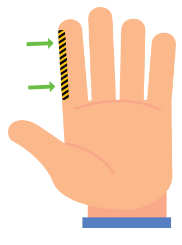Learning Guitar Basics Pt. 3

November 29, 2017
In this week’s edition of “Learning Guitar Basics,” we will cover how to play barre chords, along with some tips on how to get started with your guitar experience and how to start learning the songs you love.
The barre chord is an important term for guitarists as it is a type of chord on a guitar that musicians play by using one or more fingers to press down multiple strings across a single fret of the fingerboard. Learning how to play variations of the barre chord is usually a beginner’s most challenging task to overcome when initially starting, but with a little practice and one important tip, the process can be quickly mastered.
So, how does one “barre” an entire fret with one finger and little discomfort? When I first began to practice playing barre chords, I tried to apply all pressure to the strings using the bottom, fleshy part of my finger. Doing so seemed natural, as this was the part of my finger that performed all tactile movements involved in playing basic chords. However, the more I played like this, the more pressure I struggled to place on the chords, resulting in poor sounding music and shredding blisters. Eventually, I learned that to correctly play this type of chord, one should lay their finger on the fret with the inner or exterior, bony side touching. By doing this, the guitarist is able to apply more pressure easily, and prevent excessive cramping/blistering.
For the second part of this lesson, I promised to share how to get started playing the songs that you love to hear, but my answer is probably no surprise as I am sure everyone had already thought of it. The best way to learn a song when you are first starting off, and after you have learned most of your basic chords, is by simply searching for online tablature or music sheets that present chord progression throughout a song. Additionally, although this is obvious, it can be extremely beneficial to watch online tutorials on some of your favorite songs, as many artists help teach the song methodically and often times show the strumming pattern or tempo in which the song is meant to be played with.
Photo Credit: String Kick.com